Leaving Tawang involved at 5.00am start again with a sumo. Of course I was up and ready at that time, but it did not arrive until 5.40am. I could not complain though as it was clean, new and spotless. The journey back to Bomdilla this time was in bright sunshine and complete treacherous nature of the road and the sheer drops either side of the 4250m Sela Pass were there clearly visible for me to see (not obscured with cloud).
The driver was a bit of a maniac but not as bad as the first one, so I relaxed and the journey was over much quicker than I expected as i arrived in Bomdilla in the early afternoon
.
Tenzing had kindly booked me into a hotel in a the old market part of Bomdilla which was a little sterile, but warm. I settled in and had an early night. I had come to Bomdilla for the Bomdilla Festival which was taking place during my visit to Arunchal Pradesh. I had actually only found out about this after seeing an advertisement in Tawang and had restructured my trip around this information. Tenzing told me that the first few days would be a little quiet but the main part of the dancing would take place on the 4th and 5th days, so I timed my visit to Bomdilla around this, arriving in time for the third day.
The next morning I was up early thanks to the pack of feral dogs who fought loudly at 4.30am. After a breakfast in the old market, I decided to make an early start up to the Monastery to get a good seat for the festivities
. It was a 8km walk from the old market to the monastery and as we were still at 2800m, the air was thin. The police and army presence was suffocating yet again, and the nearer I got the more pilgrims seemed to emerge from the surrounding countryside. At the entrance to the Gompa, I was again stopped by the military and this time asked to deposit, my mobile, camera and wrist watch before entering the festival. After what had happened before I started remonstrating with the military again, asking if this was “just for foreigners” but as with in Tawang, I received incomprehensible and flippant replies. It was then I met a Mr Rinkin, a local school teacher and one of the festival organisers. He appeared overjoyed to have a foreign tourist wishing to see the festival and explained that while this was the case today for all visitors whilst the relics were there. Tomorrow though with the start of the dancing, all cameras, mobiles and wristwatches were allowed. I decided to return the following morning.
As I left the monastery to return to town I was then accosted by a man claiming to be “Indian Special Branch
.” He was very brusk and demanded to see my AP permit. I pulled it out of my money belt after examining his id together with my passport. “No I don't need your passport!” he added curtly. “Don’t you want to confirm that this is my permit with my passport as the permit has no photographic id?” I asked. He just shook his head.
The rest of the day involved the now familiar struggle to warm up and find a working internet. The following morning when I arrived at the Gompa all the military and police had disappeared, and as Mr Rinkin suggested I just entered the area in front of the monastery with no hassle. I was able to select a good seat at leisure and await all the other visitors. In the end I guess that close to 3,000 people turned up, almost all Monpas with the occasional Tibetan. I was (surprisingly) the only foreigner on both days.
The performance started with the musicians gathering
. These were the horn players, two of them and four musicians. These horns are heavy and huge and had to be taken apart to be moved. When played they deliver that low bass for which the Tibetan music is famous. Next to them were four drummers with the traditional long curved batons and the percussion.
Once these gathered, the stage had to be purified with the first dance which was performed by a man in a deer mask. This was followed by the stag with another deer and then the spirits. The head Lamas and monastery Abbots arrived shortly afterwards and there were several chants and prayers before the performance continued. All dances were long and deliberate with the performers on stage for sometimes well over thirty minutes. The masks were great big faces of the animals and demons with huge gazing eyes. The demons had small skulls decorating the perimeter of the face. The flowing robes were multicoloured and most carried daggers in one hand and a small shell in the other. Understanding what was going on was difficult unless Mr Rinkin sought me out after a performance to explain what had happened. For these explanations I was very grateful. He also introduced me to his sister, a press photographer and she ensured I had access to some great views.
We had breaks for complementary tea, and all the Monpas sitting around me were amazingly friendly and kept offering me snacks
. I started handing out my oranges to the older spectators. This Tenzing told me would be hugely appreciated as few could afford them any more - and he was right.
After the demons the animals returned and then a strange dance troupe arrived looking rather like Chinese Mandarins. All in all it was excellent and a complementary lunch was enjoyed by all the spectators. In the afternoon the performances were a little subdued so I went to look at the stalls outside the stage area and luckily met Mr Rinkin, who explained that the performances on the following day were the highlights, including the Skeleton Dance and the Burning of the Spirit Cake ritual. I decided then I would depart as the temperature was dropping and i had a long walk.
The next morning I was up early and back in my seat by the stage. The performances were more frantic on this day and more adventurous with many dancers on stage
. But it was the skeletons who were the rather creepy highlight, dancing around a shroud (representing a human awaiting reincarnation) in front of the animated demons. Monks also appeared on stage during this play illustrating temptation. It was fascinating despite the cold, and always accompanied by booming horns, crashing symbols and drums.
After lunch the Lamas disappeared to prepare the cake representing all the district’s evil spirits and this was eventually paraded around the monastery and then down towards the town. At an area next to the monastery’s nursery a large bonfire was built and then after prayers and more horn blowing, the head Lama throw a black flag on the ground and the bonfire was lit. The large red cake was then thrown onto the fire by monks. I stepped forward to take a photo not realising everyone else was running away as the cake was (I then realised) filled with firecrackers and fireworks which exploded throwing debris all over me. This caused hilarity amongst the watching crowd.
It was a great experience and as everyone made their way home, I was very happy I had taken the time out to visit Bomdilla and this excellent festival. I was also fortunate to see some of the dances I had missed in the Litung Festival in China which I attended in 1998. However now I was running out of time and the next morning I had to leave for the Hornbill Festival.
Buddhist Festival, Feral Dogs, Exploding Cakes
Sunday, December 01, 2013
 Bomdila, Arunachal Pradesh, India
Bomdila, Arunachal Pradesh, India
Other Entries
-
14Angkor Wat, orphans & getting wet.
Aug 2499 days prior Siem Reap, Cambodiaphoto_camera3videocam 0comment 0
Siem Reap, Cambodiaphoto_camera3videocam 0comment 0 -
15Tata, Trains, Taxis and Rickshaws. Chaos & Theft
Aug 3192 days prior Kolkata (Calcutta), Indiaphoto_camera6videocam 0comment 0
Kolkata (Calcutta), Indiaphoto_camera6videocam 0comment 0 -
16The Pink/Orange City, Masala Tea, Amber Fort
Sep 0884 days prior Jaipur, Indiaphoto_camera4videocam 0comment 1
Jaipur, Indiaphoto_camera4videocam 0comment 1 -
17Bundi, Dust, Forts and the real Rajasthan
Sep 1280 days prior Bundi, Indiaphoto_camera5videocam 0comment 0
Bundi, Indiaphoto_camera5videocam 0comment 0 -
18Maharajas, Lakes, Vintage Cars and Birds
Sep 1577 days prior Udaipur, Indiaphoto_camera5videocam 0comment 0
Udaipur, Indiaphoto_camera5videocam 0comment 0 -
19Big Moustaches, Street Food & Big Forts
Sep 2072 days prior Salawas, Indiaphoto_camera6videocam 0comment 0
Salawas, Indiaphoto_camera6videocam 0comment 0 -
20Psychotic Cows, Nagas, Omar Sherif & Desert Forts
Sep 2666 days prior Jaisalmer, Indiaphoto_camera4videocam 0comment 0
Jaisalmer, Indiaphoto_camera4videocam 0comment 0 -
21Special Blog: Seva Ram & Jitu Solanki
Oct 0161 days prior Bikaner, Indiaphoto_camera5videocam 0comment 0
Bikaner, Indiaphoto_camera5videocam 0comment 0 -
22Public Speaking, Painted Havelis and lots of rats!
Oct 0458 days prior Mandawa, Indiaphoto_camera8videocam 0comment 0
Mandawa, Indiaphoto_camera8videocam 0comment 0 -
23National Parks, Road Rage, Drunks & a Tiger!
Oct 1250 days prior Bharatpur, Indiaphoto_camera4videocam 0comment 2
Bharatpur, Indiaphoto_camera4videocam 0comment 2 -
24Mosques, Cremations, Festivals & Dhal
Oct 2141 days prior Varanasi, Indiaphoto_camera7videocam 0comment 0
Varanasi, Indiaphoto_camera7videocam 0comment 0 -
25Nepal, trekking, Cold, Everest and Gurkas
Oct 2834 days prior Kayakatta, Nepalphoto_camera4videocam 0comment 0
Kayakatta, Nepalphoto_camera4videocam 0comment 0 -
26Karmi Farm, Sherpa Tenzing, Mr Happy and Momos
Nov 0526 days prior Darjeeling, Indiaphoto_camera4videocam 0comment 0
Darjeeling, Indiaphoto_camera4videocam 0comment 0 -
27Rhinos, Armed Guards & Posing For Photos
Nov 1417 days prior Kaziranga National Park, Indiaphoto_camera5videocam 0comment 0
Kaziranga National Park, Indiaphoto_camera5videocam 0comment 0 -
28Spiders, The Kharsi, Archery and Bad Driving
Nov 2011 days prior Cherrapunji, Indiaphoto_camera5videocam 0comment 0
Cherrapunji, Indiaphoto_camera5videocam 0comment 0 -
29Monpas, Sumo, Yak Butter Tea & Indian Army
Nov 247 days prior Tawang, Indiaphoto_camera7videocam 0comment 0
Tawang, Indiaphoto_camera7videocam 0comment 0 -
30Uncles, Nuns, Bridges, Red Rice and Gompas
Nov 274 days prior Sakti, Indiaphoto_camera5videocam 0comment 0
Sakti, Indiaphoto_camera5videocam 0comment 0 -
31Buddhist Festival, Feral Dogs, Exploding Cakes
Dec 01 Bomdila, Indiaphoto_camera6videocam 0comment 0
Bomdila, Indiaphoto_camera6videocam 0comment 0 -
32A Horror Journey
Dec 032 days later Tezpur, Indiaphoto_camera4videocam 0comment 0
Tezpur, Indiaphoto_camera4videocam 0comment 0 -
33Hornbill Festival, Nagas & Nagaland
Dec 109 days later Kohima, Indiaphoto_camera6videocam 0comment 3
Kohima, Indiaphoto_camera6videocam 0comment 3 -
34Pied Pipers, Hard Beds, Ao and Chang tribes
Dec 1817 days later Mokokchung, Indiaphoto_camera7videocam 0comment 0
Mokokchung, Indiaphoto_camera7videocam 0comment 0 -
35Battles, Monoliths, Street Photography, Home
Jan 0131 days later Dubai, United Arab Emiratesphoto_camera6videocam 0comment 0
Dubai, United Arab Emiratesphoto_camera6videocam 0comment 0 -
36Athens, Bristol, Doctors and Rain - lots of rain
Jan 1545 days later Athens, Greecephoto_camera2videocam 0comment 0
Athens, Greecephoto_camera2videocam 0comment 0 -
37Addis, Bus Travel, Malibu Storks and Lake Storms.
Feb 0162 days later Addis Ababa, Ethiopiaphoto_camera4videocam 0comment 0
Addis Ababa, Ethiopiaphoto_camera4videocam 0comment 0 -
38Minibuses, Police, Impounding, Gon
Feb 0566 days later Awasa, Ethiopiaphoto_camera4videocam 0comment 0
Awasa, Ethiopiaphoto_camera4videocam 0comment 0 -
39Baboons, Mountains, 4000m Trek, Ibex
Feb 0970 days later Gonder, Ethiopiaphoto_camera5videocam 0comment 2
Gonder, Ethiopiaphoto_camera5videocam 0comment 2 -
40Churches, Caves, Rocks, Pilgrims plus Minibuses
Feb 1677 days later Lalibela, Ethiopiaphoto_camera5videocam 0comment 0
Lalibela, Ethiopiaphoto_camera5videocam 0comment 0 -
41Volcanos, lava, sulphur & aggressive tourists.
Feb 2182 days later Mekele, Ethiopiaphoto_camera4videocam 0comment 2
Mekele, Ethiopiaphoto_camera4videocam 0comment 2 -
42Rock Hewn Churches, Plan Changes, Addis
Mar 0190 days later Wukro, Ethiopiaphoto_camera3videocam 0comment 1
Wukro, Ethiopiaphoto_camera3videocam 0comment 1 -
43Lip Plates, Mursi, Mingi Children & Bad 4x4s
Mar 0594 days later Jinka, Ethiopiaphoto_camera4videocam 0comment 0
Jinka, Ethiopiaphoto_camera4videocam 0comment 0 -
44Hamar, markets, clothes and free beer (not for me)
Mar 0897 days later Turmi, Ethiopiaphoto_camera4videocam 0comment 0
Turmi, Ethiopiaphoto_camera4videocam 0comment 0 -
45Bull Jumping, Whipping, Wiggly Canoes, Addis Rain
Mar 17106 days later Johannesburg, South Africaphoto_camera6videocam 0comment 4
Johannesburg, South Africaphoto_camera6videocam 0comment 4 -
46Family, Food, the Cape and Animals
Apr 01121 days later Fish Hoek, South Africaphoto_camera4videocam 0comment 0
Fish Hoek, South Africaphoto_camera4videocam 0comment 0 -
47Baguettes, Renault 4s and a little bit of France
Apr 09129 days later Antananarivo, Madagascarphoto_camera2videocam 0comment 0
Antananarivo, Madagascarphoto_camera2videocam 0comment 0 -
48Indri, Chameleons, Weevils, Frogs and Night Safari
Apr 12132 days later Andasibe, Madagascarphoto_camera6videocam 0comment 0
Andasibe, Madagascarphoto_camera6videocam 0comment 0 -
49Air Mad, Rain, Leeches, Trekking, Jungles
Apr 18138 days later Sambava, Madagascarphoto_camera6videocam 0comment 0
Sambava, Madagascarphoto_camera6videocam 0comment 0

 Bomdila, Arunachal Pradesh, India
Bomdila, Arunachal Pradesh, India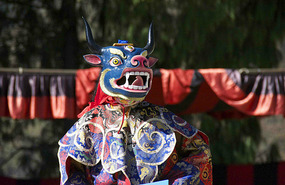
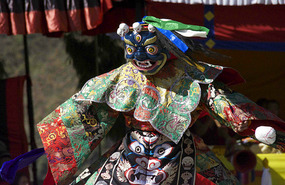
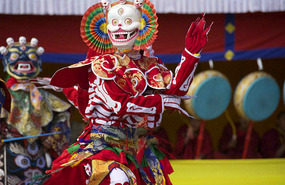
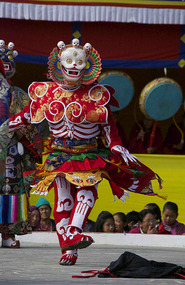
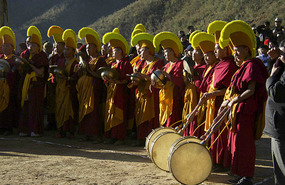
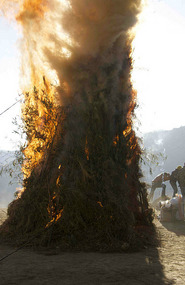








2025-05-22